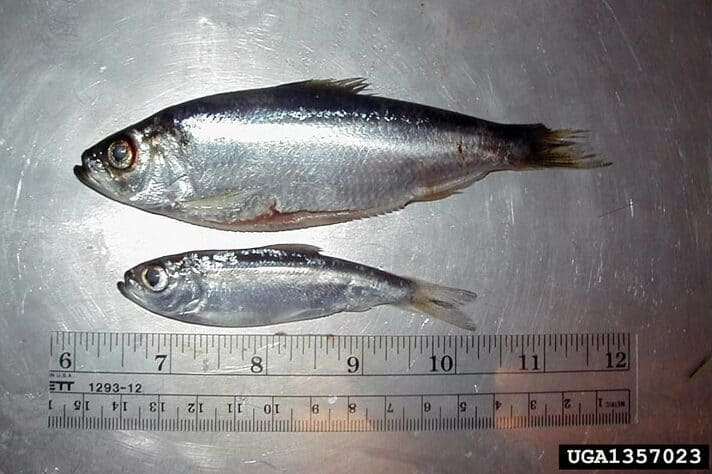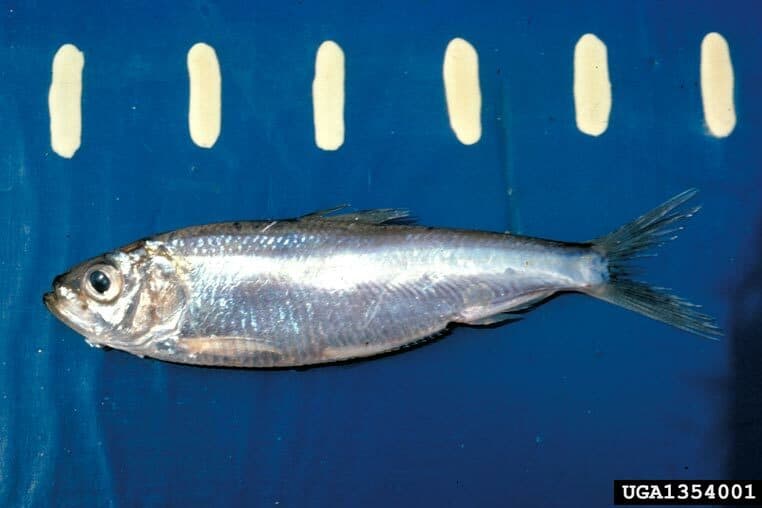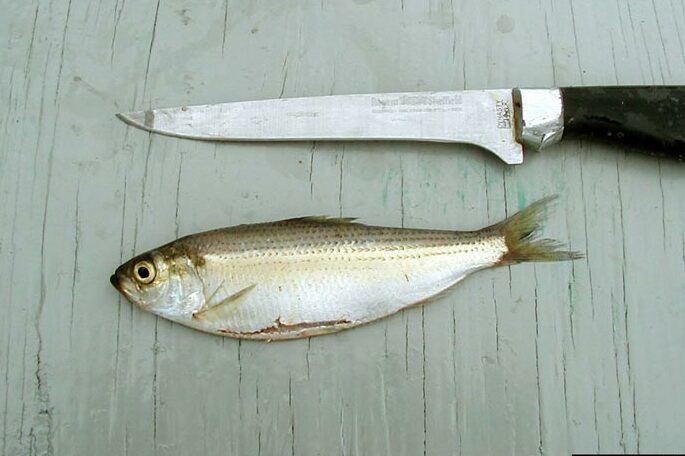Other Names: Sawbelly
Identification
Alewives are predominantly silver, except for a grayish green back. There is also a single black spot just behind the head at eye level. The common name “sawbelly” originates from the very distinctive overlapping scales along the belly that create a saw-like keel.
Alewives in the Great Lakes
Alewives are small, silver fish native to ocean environments. The alewives were first seen in Lake Ontario in the late 1800s and next in Lake Erie in the 1930s. Since then, populations have expanded to all the Great Lakes. Alewives are considered to be the major prey of salmon in the Great Lakes, having a positive effect on their populations. This invasive species competes for plankton and aquatic organisms amongst native lake herring, whitefish, chubs, and perch, which negatively affects these species. Furthermore, alewives are known to consume yellow perch and lake trout while in their early life stages.
An Explanation for Large Die off Events
In many places from Chicago to Wisconsin and Northern Michigan, large die-off events of alewives have been observed. The dead fish will wash up on the shore by the thousands, naturally causing many questions as to why this happens.
Because the alewife is not adapted to life in fresh water, this is thought to be a contributing factor to large die-off events. Alewives are not well adapted to the osmotic stress imposed with living in fresh water. In other words, fish native to freshwater environments constantly work to pump water out of their bodies and have larger kidneys than saltwater fish for this purpose. Water tends to leak into the cells of un-adapted fish. Fish that do not have the body parts adapted for this pumping system do not survive as well in freshwater environments and are particularly sensitive to life in the Great Lakes.
Changes in water temperature is another factor leading to alewife die-offs. Alewives spend most of the year in deep, cool waters of the open lakes and come to shore waters in the summer to spawn. When the fish move from deep to shallow water, they experience a large rise in temperature. This severe change in water temperature can cause the fish to die.
Another theory for the fish die off suggests that alewives are not able to survive winter because in autumn, the food supply is too low to build sufficient energy stores. It is likely that all of these factors in combination contribute to the large die off events.




Reporting Invasive Species – FREE APP The MISIN smartphone app provides a mobile solution for the capture of invasive species field observation data. You can play an important role in the early detection and rapid response to new invasive threats in your area by contributing invasive species observations to the MISIN database.
|



